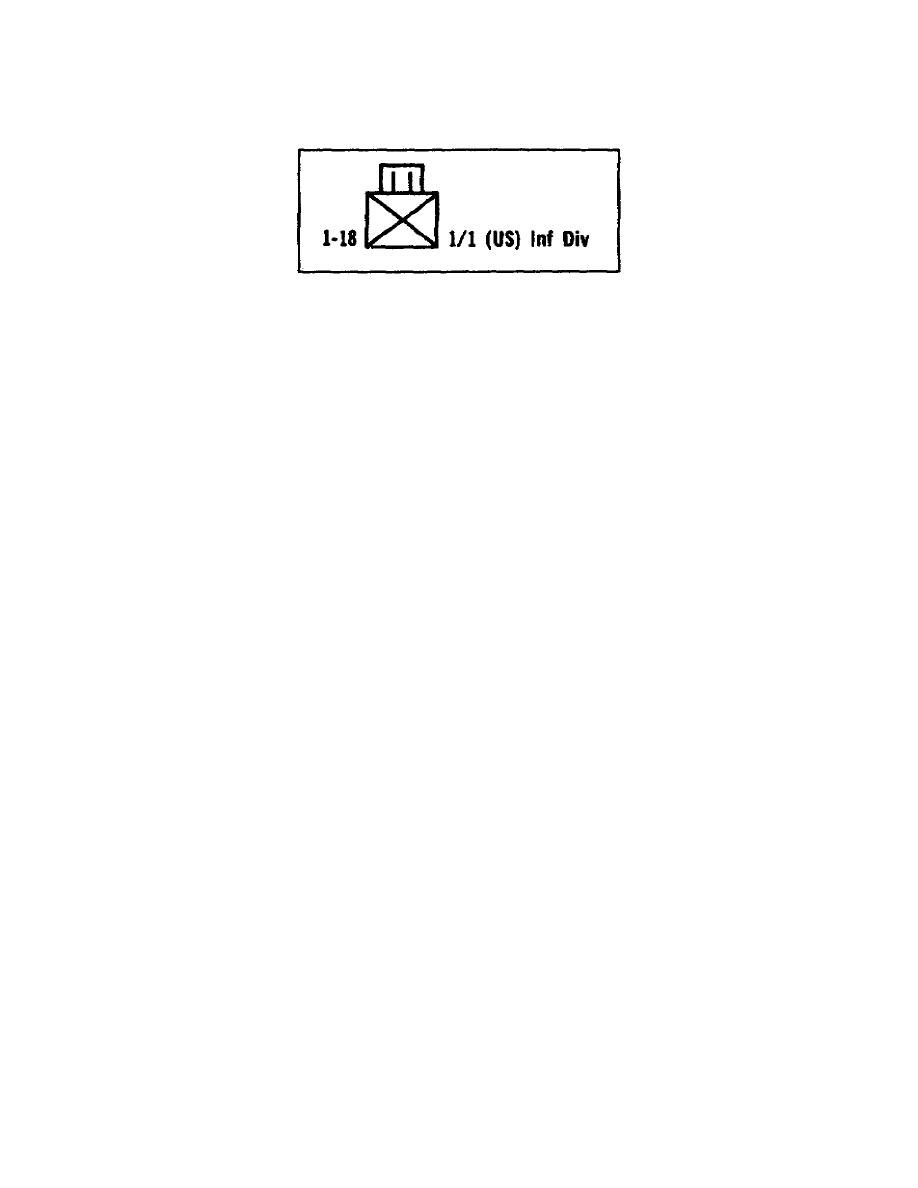
loses the impact of having all the information available and combined as
a single element. Decision graphics help overcome this problem.
Figure 1-47.
Standard operational symbol for a task force
One element of a decision graphic is combat effectiveness. Task force
commanders
have
the
responsibility
of
determining
the
combat
effectiveness of the task force they command.
A task force commander
analyzes the status of fuel, ammunition, vehicle availability, and
personnel reported to them by their staff in the number of different
formats.
After the task force commander has analyzed this data, he
determines the task force's ability to perform its mission.
(2) Showing overall combat effectiveness.
You can express the
task force commander's decision as a decision graphic.
The decision
graphic shows the overall combat effectiveness of the task force and the
status of four selected items of interest, as determined by the task
force commander (e.g., personnel, ammunition, POL, or weapons system).
(a) Parts of a decision graphic.
The combat effectiveness
portion of a decision graphic uses two circles. One circle, divided into
thirds, shows the task force commander's combat effectiveness assessment,
and the other circle, divided into fourths, shows the areas of interest
affecting their decision. Additionally, the selected areas of interest
have the titles of the four areas indicated so it presents a clear
picture of its portion of the task force's status (figure 1-48).
Figure 1-48 shows how a decision graphic indicates the four combat
effectiveness rating a task force commander can use. When a commander
decides their task force has "no problem" performing its mission, you do
not fill in any portions of the effectiveness or selected information
graphics (circles). However, when a task force commander indicates their
task force has "some difficulty," or "major problems," or "cannot"
perform its mission, you fill a portion of the effectiveness graphic
(circle) and the portion(s) of the selected information graphic (circle)
that indicates the area(s) in which a task force commander feels he has a
problem.
1-54
SS0530



 Previous Page
Previous Page
